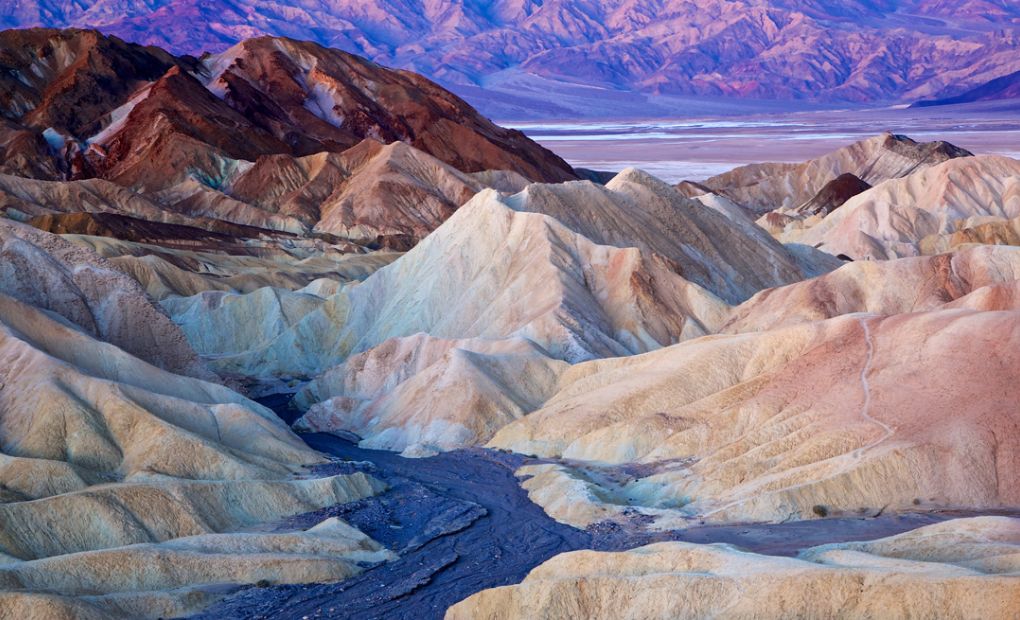Death Valley National Park is one of the country’s greatest parks. In the Mojave Desert of California, the park covers approximately 13,600 km2. Its geographical location is conducive to its arid climate because five mountain ranges, including the Sierra Nevada in the west, contribute to its drying out. The Earth’s temperature record of 56.7°C was established in Furnace Creek, located in the center of Death Valley.
The park consists of several valleys, including Death Valley, which gave the park its moniker. The park’s total area is 7,800 km2, which is equivalent to the French Department of Puy-de-Dome or the Canadian island of Anticosti. This is the most frequented location.
1- What to see at Death Valley National Park?
Beyond its severe climate (when we visited, the temperature reached 24 degrees Fahrenheit with rain! ), the valley is a treasure trove for nature and photography enthusiasts. There are many things to see, but you will have to pay a lot of money to spend the night in the park in order to fully appreciate the scenery.
- Badwater Basin
- Devil’s Golf Course
- Artist’s Drive
- Golden Canyon
- Mesquite Flat Sand Dunes
- Ubehebe crater
- Zabriskie Point
1- Badwater Basin
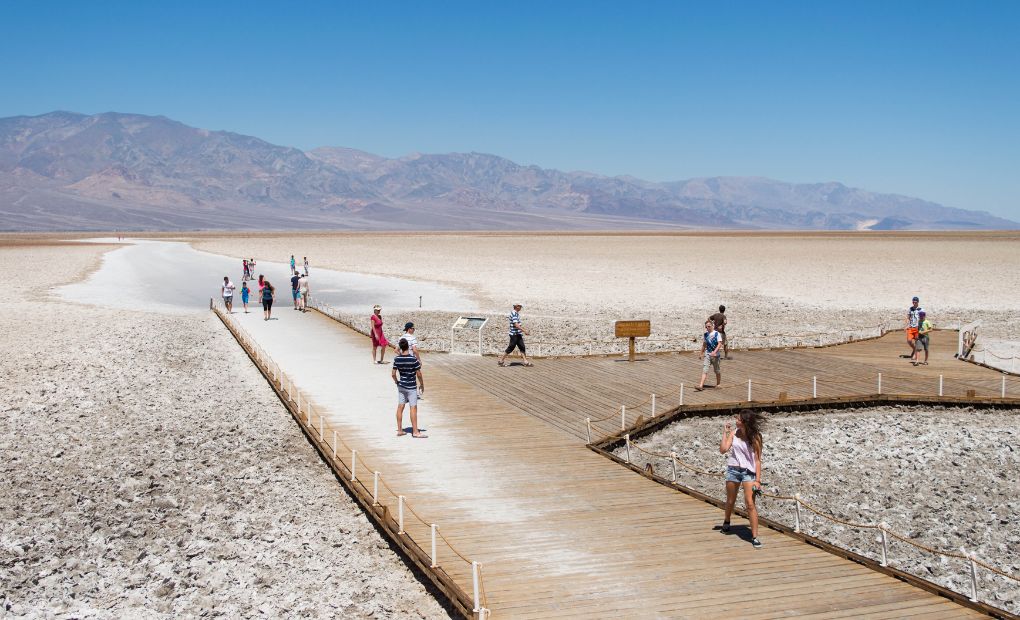
At 85.5 meters below sea level, Badwater Basin retains the record for the lowest point in North America. Look for the “sea level” sign on the cliff on the opposite side of the road to gauge the profundity of the location. Here, the humidity is oppressive and everything appears to be lifeless.
The Lake Manly remnant, an ancient salt lake that extended from north of Furnace Creek to the park’s southern boundary, is accessible on foot from the parking lot. Depending on the most recent rainfall, there may be a few pools of water teeming with life, as though it were frantically clinging to this hostile climate.
2- Devil’s Golf Course
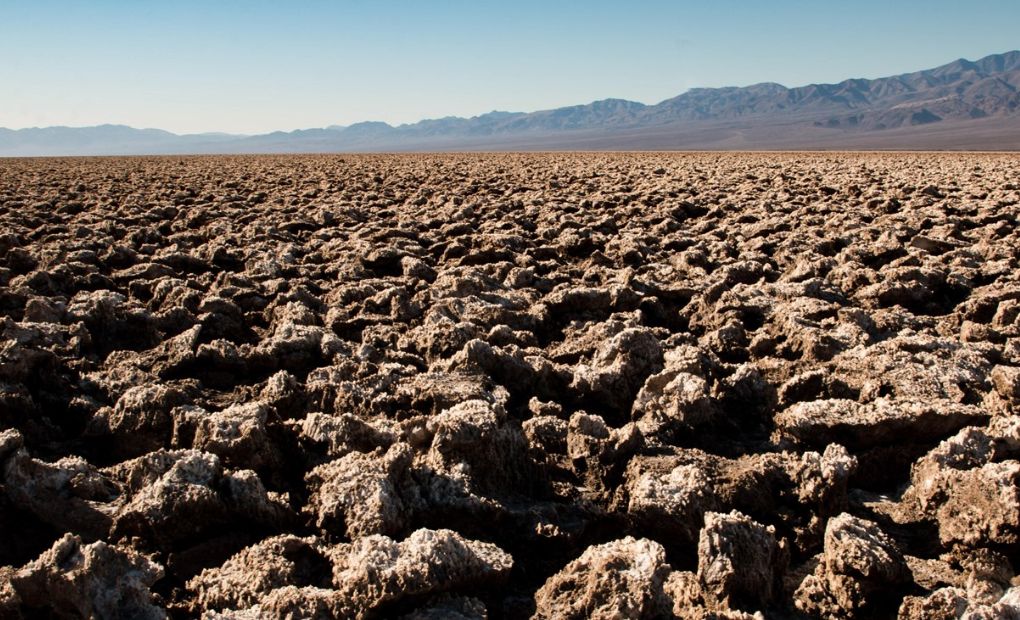
When traveling north from Badwater, a narrow gravel road will begin on the left. Unconcerned, a passenger car passes despite its condition. Here you are at Devil’s Golf Course, which translates to “the devil’s golf course” When you exit the vehicle, you realize that only the devil would have thought to play golf there.
The bottom of the former Manly Lake, which appears flat on the surface, is actually composed of razor-like salt concretions. Carefully avoid cutting yourself!
3- Artist’s Drive
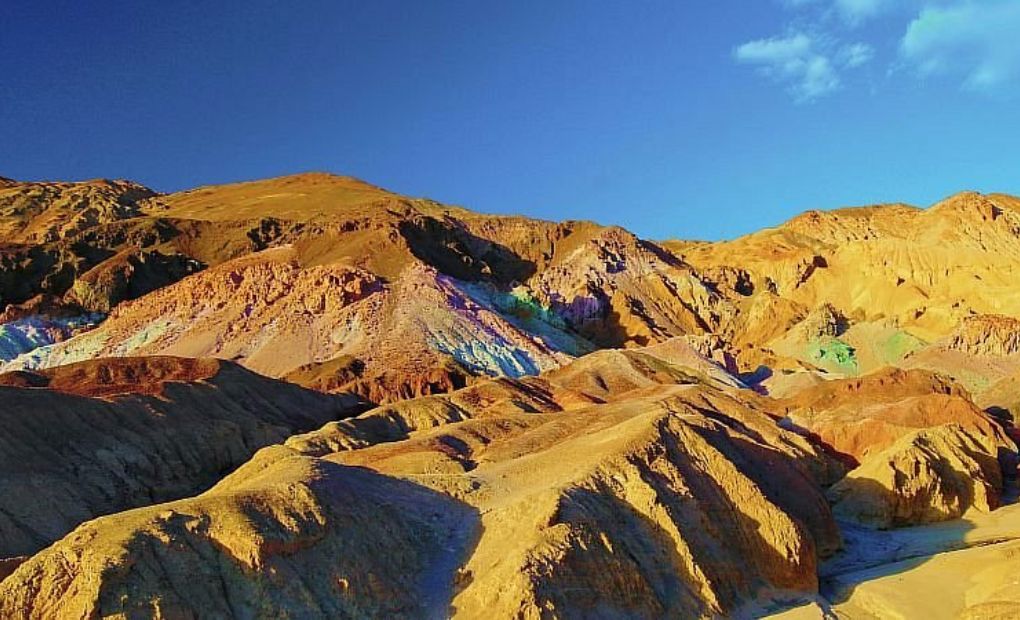
After 4 kilometers, if you are traveling north to Furnace Creek, turn right onto Artist’s Drive to view the colorful boulders. A delight for the senses! The colors of the boulders are due to the various minerals that comprise the landscape. Green for mica, pink/purple for manganese, and ochre for iron.
After a few kilometers, a parking lot on the right will enable you to ascend a hill to view Artist’s Palette, one of Death Valley’s most surreal landscapes. However, don’t stop there. Proceed along Artist’s Drive. The narrow road will lead you through breathtaking landscapes comprised of vibrant strata. After seven kilometers, you will reach the main road.
4- Golden Canyon
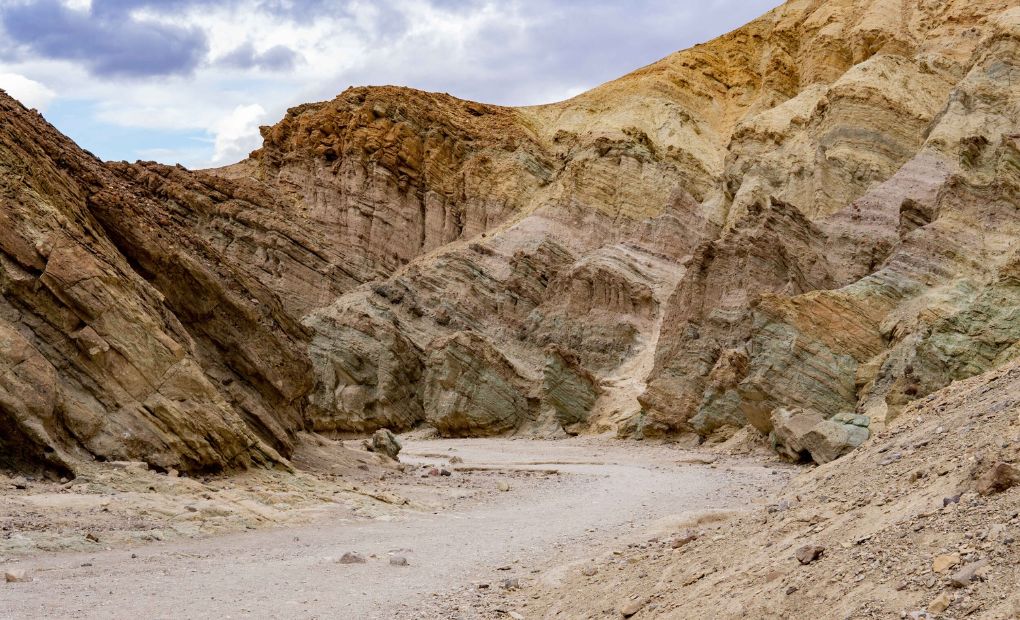
Continue north 5 kilometers from Furnace Creek, and you will see the entrance to Golden Canyon marked by golden-colored boulders. The canyon where the two droids advance in one of the saga’s earliest scenarios (Episode 4: A New Hope) will be familiar to Star Wars fans.
The Yellow Rock Canyon is accessible on foot from the Badwater Road parking lot, south of Furnace Creek. A trail leading to the canyon for approximately 1.5 kilometers. Don’t hesitate to advance until the throats contract. At the day’s conclusion, at sunset, the colors are even more spectacular.
5- Mesquite Flat Sand Dunes
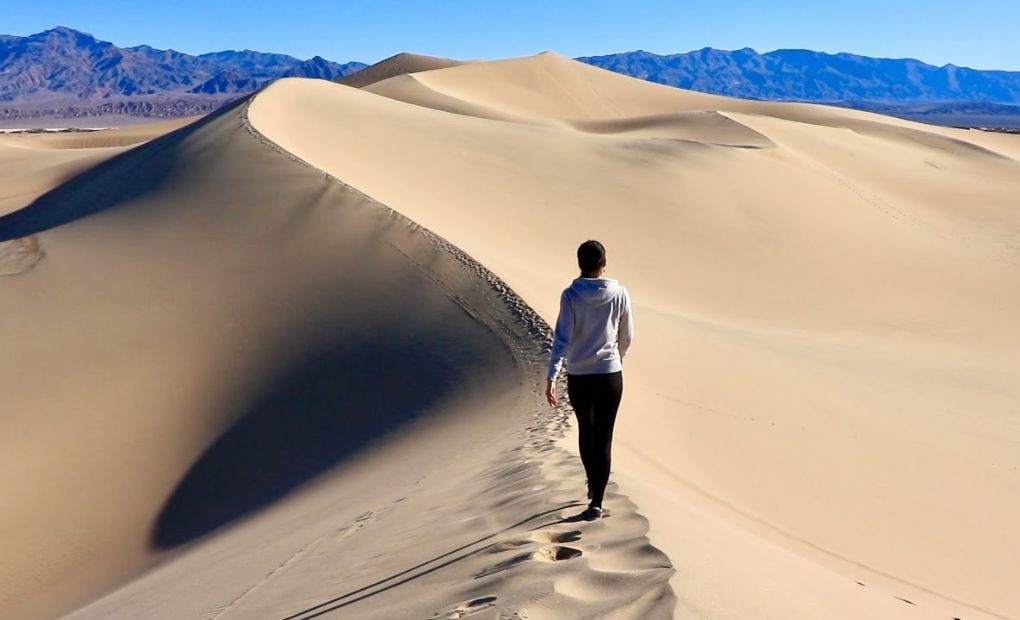
Since we are in the Star Wars universe, here is another location that provided one of the film’s most unusual settings. it’s Mesquite Flat Flat Sand Dunes. In the midst of Death Valley’s rugged terrain is an expanse of yellow sand dunes! The largest of the dunes is appropriately named Star Dune!
From the parking lot, you can enter the dunes. There is no path; you are free to walk wherever you choose. In the event of extreme heat, be especially vigilant and bring plenty of water, as the sun is intense and walking in the dunes is exhausting. If possible, investigate the area early in the morning or late in the evening.
6- Ubehebe crater
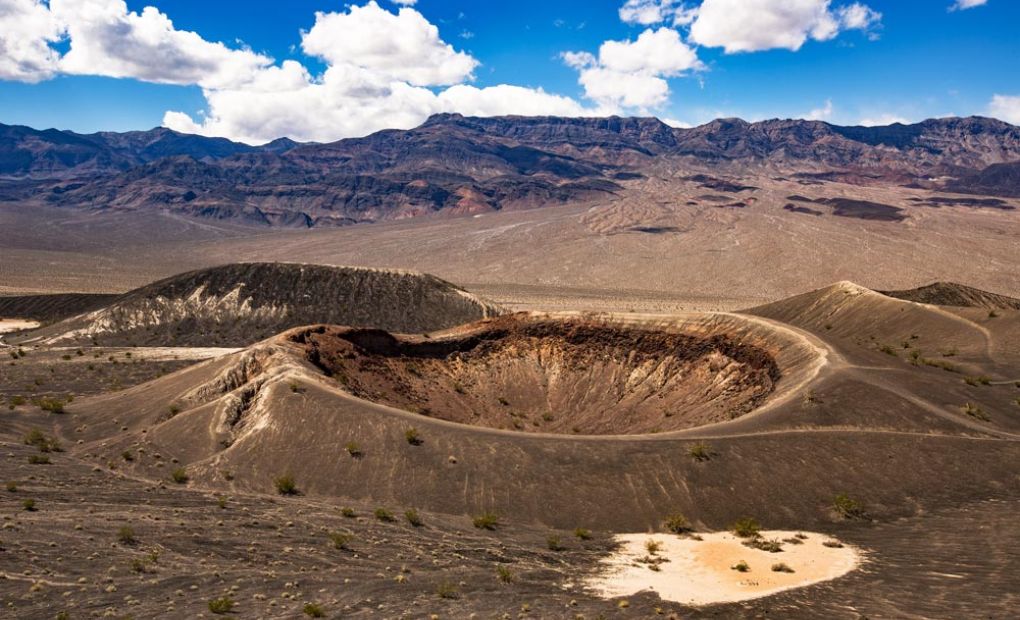
After a little more than 60 kilometers along Scotty’s Castle Road to the north of the park, you will find the impressive Ubehebe Crater, a testament to past geological forces. The crater has a diameter of approximately 800 meters and a depth of 237 meters.
Although it resembles a meteorite crater, it was actually formed by a gas eruption caused by the pressurization of an underground water pocket heated by magma. It is believed to be between 2,000 and 7,000 years old.
If you so choose, you can travel to the crater’s rim, where a 2-kilometer trail enables you to explore the area and discover additional small craters. It takes approximately one hour to get there from Furnace Creek.
7- Zabriskie Point
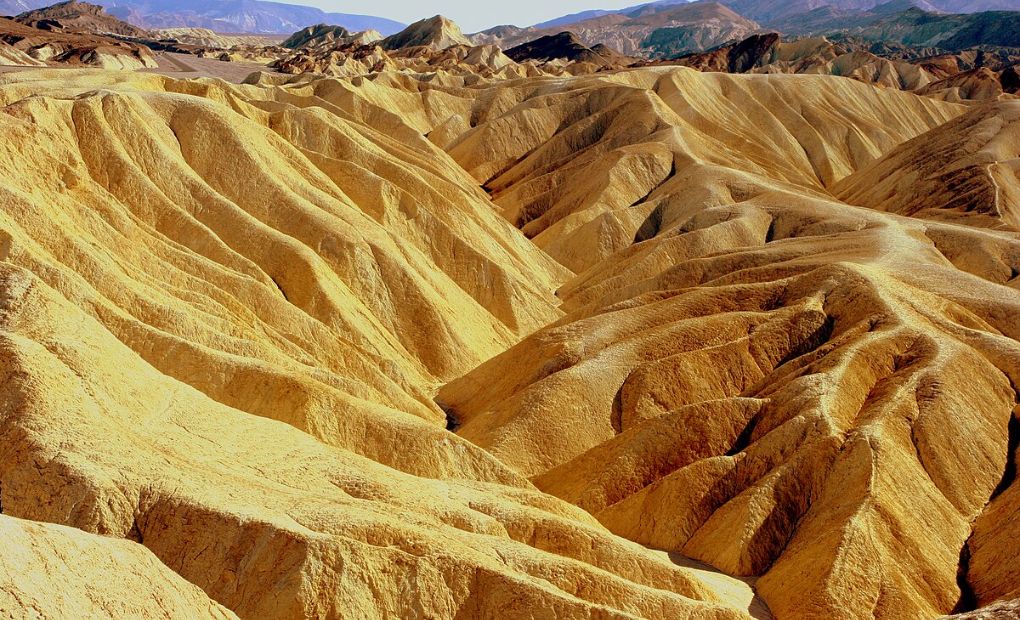
Before leaving or entering Death Valley, remember to pause at Zabriskie Point, which offers one of the valley’s most breathtaking vistas. From the parking lot, it will only take a few steps to reach this incredible landscape with its rounded forms and hues reminiscent of chocolate marbling.
The stones appear to have been formed by shifting sand, but the hard soil was actually sculpted by erosion. Once, the Borax was extracted here. There are still visible remnants of landmines in the park. The point of view was also the title of a 1970 Italian-American movie.
That’s the end of the Death Valley sites we encountered during our trip. All we could do was linger there for an entire day. Due to this scheduling being too precise, we were unable to uncover all the secrets of this vast park. There is so much to see, including the renowned Racetrack Playa and its moving rocks, Aguereberry Point, Dante’s View, Darwin Falls, Red Cathedral, Natural Bridge Canyon, and a handful of deserted towns that still bear traces of the gold rush era.
2- Fauna and Flora at Death Valley National Park
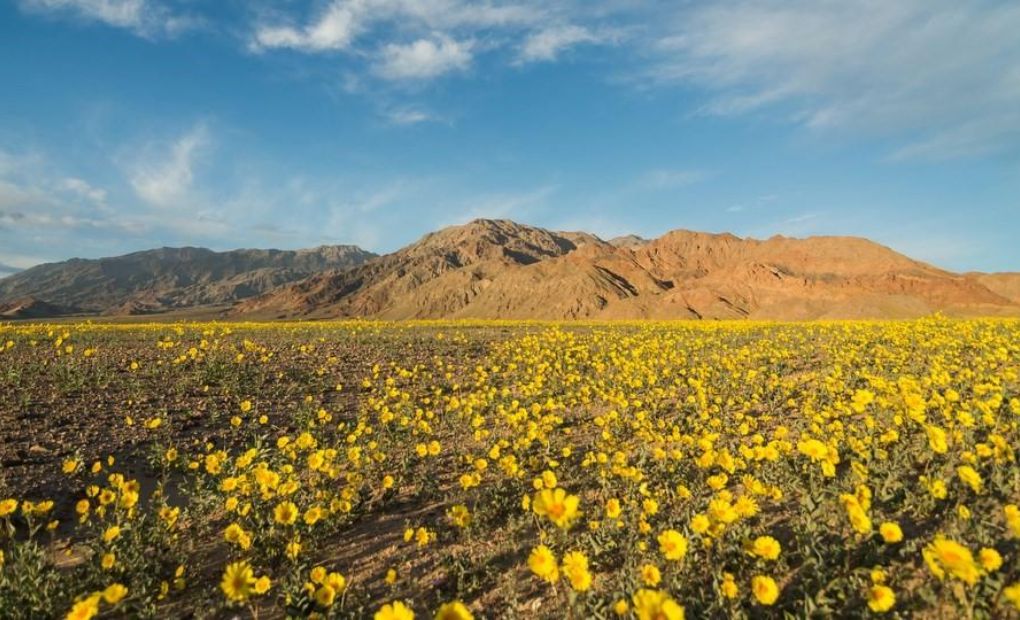
Despite the fact that the region is extremely inhospitable to life, it is not uncommon to spot a few animals there. Over 400 species have been cataloged. During our trek in 2014, we encountered a coyote that appeared ravenous. As well as raptors, such as the red-headed Urubus, birds of prey have settled in the park.
The park appears to be devoid of vegetation despite the presence of over 1000 species! Due to their profound roots, certain species are able to flourish despite the infrequent rains. The rains cause the vast majority of cactus species and small shrubs to blossom in the spring. The arid plains are then coated with a colorful but ephemeral covering.
3- Links and information before visiting Death Valley National Park
Access to the park is free, and a seven-day parking pass costs $25 per vehicle (up to five people). The permit for America the Beautiful is valid. You may pay the entrance fee to the visitor center if you do not utilize a storage container. Remember to place the receipt on the windshield.
Be cautious because this region is notorious for its frequent floods (rapidly forming water torrents that can sometimes transport everything). Avoid high-risk areas during inclement weather.
Carry plenty of water and avoid heavy braking on descents during sweltering weather. Use the engine brake as often as feasible to prevent the pads from overheating. Water points have been provided in the park to cool the engine if required (their locations are marked on the park map).
Bookmark our website for more travel posts.

